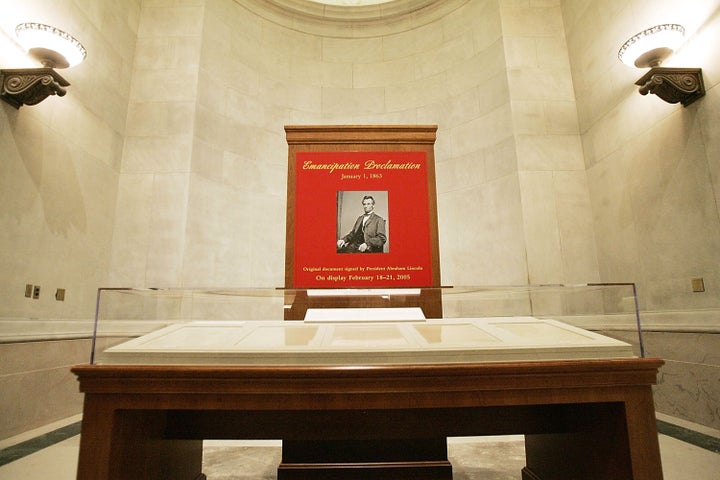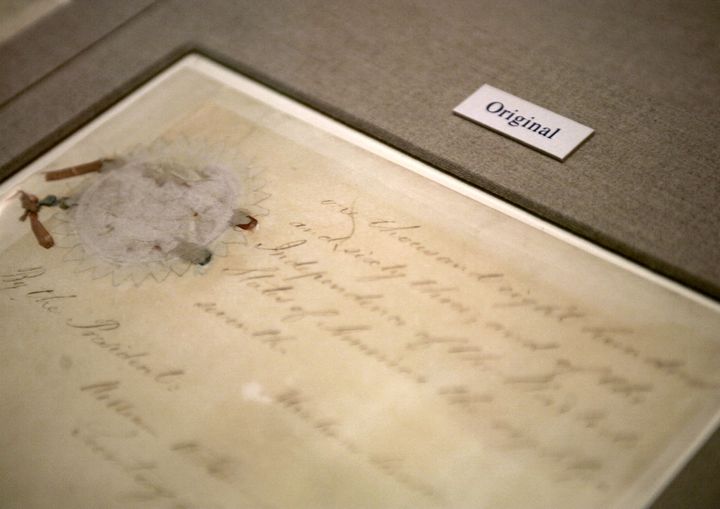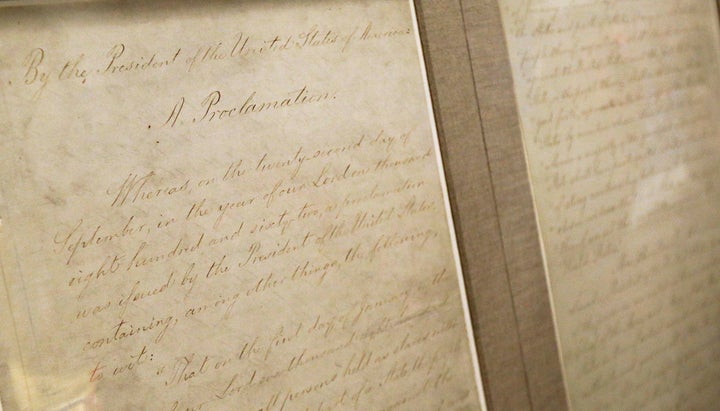
The Emancipation Proclamation, the historic executive order that paved the way for the end of slavery in the U.S. 160 years ago, will soon be on permanent display in the National Archives.
The original 1863 order will be featured inside of the agency’s Rotunda in Washington, along with the Declaration of Independence, the Constitution of the United States, and the Bill of Rights, Archivist of the United States Dr. Colleen Shogan announced Saturday.
The order, signed by President Abraham Lincoln, is annually put on temporary display as part of the Archives’ Juneteenth celebration, which commemorates the official emancipation of enslaved Africans.
Work remains underway to determine how best to display the fragile documents for public viewing long-term so they don’t get damaged, the Archives said.

“The current plan for display calls for showing one side of the Emancipation Proclamation, a double-sided five-page document, alongside facsimiles of the reverse pages,” the agency said in a statement. “The original pages on display will be rotated on a regular basis to limit light exposure.“
It was not immediately clear when the permanent display may be unveiled.
The Emancipation Proclamation was enacted roughly two years into the American Civil War and contrary to some popular belief, it only applied to rebellious states that had seceded from the U.S. and joined the Confederacy.
This meant that slavery remained legal in Union-loyal border states. It also did not apply to parts of the Confederacy that were already under Northern control.
President Lincoln had said that the order was a war tactic and that he believed that outlawing slavery was the only way to save the Union and end the fighting.

The Proclamation strengthened the Union both militarily and politically, with it allowing Black men to join Union forces and fight for their freedom in the Union Army and Navy. Nearly 200,000 Black soldiers and sailors would fight for the Union by the end of the war, according to the Archives.
“If I could save the Union without freeing any slave I would do it, and if I could save it by freeing all the slaves I would do it; and if I could save it by freeing some and leaving others alone, I would also do that,” Lincoln wrote in a letter to abolitionist and newspaper publisher Horace Greeley in 1862.
It wasn’t until the 13th Amendment was ratified in 1865 — two years after the Emancipation Proclamation — that slavery officially ended in the entire U.S.
Delaware and Kentucky were the only two states at that point that still allowed slavery.
“Although the full privileges of freedom were not immediately bestowed upon all Americans with Lincoln’s order, I am proud that the National Archives will enshrine this seminal document for public display adjacent to our nation’s founding documents,” said Shogan in a statement. “Together, they tell a more comprehensive story of the history of all Americans and document progress in our nation’s continuous growth toward a more perfect Union.”
